The Canon 60D is prosumer DSLR with video capture prowess. It sports an 18MP APS-C format sensor and a swivel LCD. As the successor to the Canon 50D, it’s somewhat of a change in the natural progression of the xxD line of cameras. A smaller form-factor gives it a more Canon Rebel look and feel; however, the video features and articulating LCD display take it up to and beyond some of the capabilities of the Canon 7D and 5D Mark II.
To see whether the Canon 60D is right for you, read on.
Canon 60D Key Features
- 18MP CMOS Sensor
- 1920 x 1080 HD video at 30p/24p
- ISO 100-12,800 equivalent
- Articulating 3-inch LCD
- 5.3 fps
- 9-point AF system (center f/2.8 cross-type)
- SDXC Memory Card Compatible
Canon 60D Handling and Controls
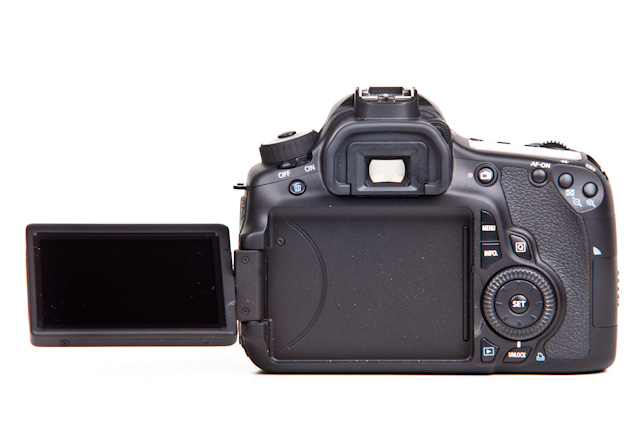
As noted above, the 60D takes a step down in size from its 50D predecessor. However, the 60D still has a more substantial grip than the Rebel T3i – it still feels like a serious camera.
Some will love and some will hate the new articulating LCD. As someone who shoots a lot of video with DSLRs, I’m a big fan of the articulating LCD on the 60D. I also prefer the “swing out” design of the 60D over the flip-down design of the Sony A55. Additionally, the high resolution of the LCD is nice to have.
Those who have used Canon DSLRs in the past will have no problems acclimating themselves to the Canon 60D’s controls. One thing that’s changed on the 60D from the 50D is the little joystick controller (which, frankly, I hated). Instead, the 60D uses the little control pad inside the rear control wheel for adjusting focus points and other navigational controls previously mapped to the joystick.
Overall, the controls still offer most of the prosumer access even if they’ve moved around a bit as compared to the 50D. The biggest loss of direct access buttons (in my opinion) are for white balance and flash exposure compensation. These are settings that I use often and it definitely takes away some of that “pro” camera feel from the 60D.
Shooting with the Canon 60D
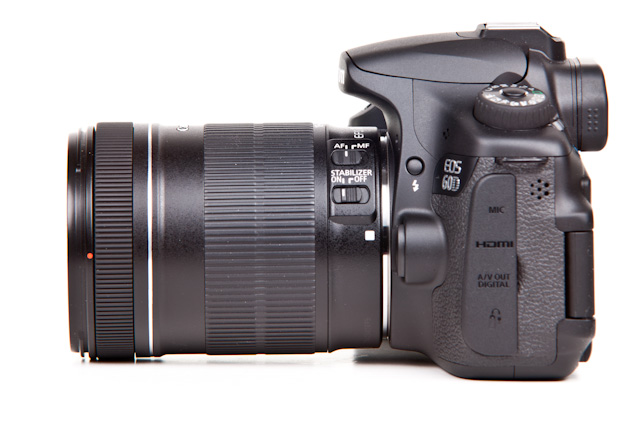
The Canon 60D, to me, is a great camera for the enthusiast. Even though it loses a bit of the “pro” feel, as noted above, it still offers a lot for the experienced user to carry around as a casual camera. This is particularly true for those who plan on using it for capturing HD video alongside still images. And really, I wouldn’t hesitate to do portraits or a wedding with the 60D and some fast glass.
The 18-135mm IS kit lens is just about perfect for this camera as an all-purpose “kit” offering. It covers a 35mm-equivalent focal range of 29-216mm, which is pretty massive considering how light and compact this lens is. I found the image stabilization to be pretty darn impressive with both stills and video.
As a stills camera, the 60D fits nicely where Canon has placed it in the lineup – between the Canon 7D and Rebel T3i. Having used all three, the 60D definitely fills the large gap between the other two models.
There are a lot of photographers who could probably care less about the swivel LCD on the 60D. However, I’m a pretty big fan of it. I have used it to take photos at angles that I would have otherwise missed. I know others are taking advantage of this too. For example, while I was at NAB, I saw a new 60D owner shooting an image of the crowd gathering at the Final Cut Pro User Group Supermeet. He held the camera high over his head with the LCD tilted down so he could frame it properly using the Live View feature. On the Canon 50D that would have been guess work, but the 60D’s LCD opens up little doors like that.
Of course, the Canon 60D fails somewhat in the Live View autofocus department. It uses a rather slow contrast detection autofocus during Live View; however, you can also switch to the fast phase difference AF method (but it blacks out the screen during the actual focus acquisition). Either focus method is clunky – but both will help you get the shot when you otherwise might not be able to put your eye to the viewfinder.
In addition to the AF modes, the 60D lets you zoom in to the live view display and fine tune manual focus. You can magnify the image up to 10x of what you see in the LCD and fine tune your focus, which is especially helpful for shallow depth of field scenes.
As for standard use through the viewfinder, the 60D’s AF system is reminiscent of what was offered with the 50D – a no frills 9-point AF system. I encountered no problems with accuracy or AF hunting during my time using the 60D. Of course, it would be nice the have the advanced, customizable AF system like is found in the Canon 7D, but as it stands, the 60D will serve most prosumers’ AF performance requirements just fine.
Canon 60D Movie Mode

The 60D really shines when shooting video – thanks in large part to the swivel LCD screen. I can’t tell you how many times I’ve been shooting video with my 5D Mark II and wished I could rotate the screen instead of twisting my body in odd positions to see what’s on the screen. The 60D’s swivel screen really eases the strain in framing certain angles.
Of course the 60D suffers from the same limitations as other DSLRs when shooting video. The ergonomics of the camera body are not necessarily practical. It uses the same line skipping capture method on the sensor, which produces the ugly jello effect in some motion shots. You also have the limitation of clip capture times (12 minutes of HD capture), which makes the 60D difficult to use for long-form productions.
Even with the limitations, the 60D is capable of producing stunning footage with a very cinematic-quality thanks to the large sensor size and resulting shallow depth of field.
The 60D offers full manual control of exposure during video capture. Additionally, the 60D allows you to adjust the audio levels so that you don’t have to rely on the built-in automatic gain control (AGC) for your audio levels. While I generally use a dual system and leave AGC on when shooting video with DSLRs, I like the ability to manually control audio levels if I’m using a shotgun mic like the Rode VideoMic Pro (which works very well with the 60D).
Canon 60D Image Quality
Canon has gotten a lot of mileage out of this 18MP image sensor – for good reason though. The 7D, 60D and Rebel T3i all use a very similar (if not the same) version of this sensor and all of these cameras provide great image quality.
Below I have included several sample photos captured with the 60D. Most of these were captured on a recent trip to Chile.
All images were captured in RAW format and processed in Lightroom 3 and/or Photoshop CS5 according to my own personal tastes. In most of these images, I’ve only made slight contrast, saturation, sharpness and vignetting adjustments (although I took a bit of liberty with some). I have noted the basic shot info below each image. Most images were made with the Canon 60D?s 18-135mm kit lens. Some were shot with the 50mm f/1.4.
In addition to real world samples, I’ve provided a number of images of a color chart captured with the 60D throughout the ISO range. These were RAW files processed in Lightroom with the default adjustments applied.
Feel free to download any of these sample images for your personal inspection (not for republication). You can get the original files by right-clicking on any of the images and choosing “Save link as…”

ISO 2500 – f/5.6 – 1/125s

ISO 100 – f/7.1 – 1/125s

ISO 100 – f/8 – 1/400s (tilt-shift effect applied in Alien Skin Bokeh 2)
Canon 60D Accessories
Memory Cards – The 60D follows Canon’s recent pattern of using SD cards instead of CF cards. Unfortunately, the 60D does not take advantage of the latest high-speed developments in SD card technology. As a result, the 60D won’t transfer data to UHS-I SD cards (like the SanDisk Extreme Pro series) at the highest possible transfer rate. Note, that UHS-I cards will still work fine in the 60D – you just won’t get the fastest possible transfer rate for the card’s technology. Accordingly, I would recommend sticking with the SanDisk Extreme series SDHC cards. In any event, Canon recommends using at least a Class 6 or higher SD card for recording HD video.
Canon LP-E6 Battery – The Canon 60D shares the same battery as the Canon 7D and 5D Mark II. Of course, one of these batteries is included with the camera. It’s a good battery that lasts a long time for still images; however, if you are shooting a lot of video, you can chew them the battery pretty quickly.
Canon BG-E9 Battery Grip – This accessory grip for the 60D allows you to shoot portrait-oriented shots with a proper grip and shutter release. Additionally, it allows you to power the 60D with two LP-E6 batteries at the same time, effectively doubling your uninterrupted shooting time.
Canon EF 50mm f/1.4 USM – This is my personal favorite lens as a mate for the Canon 60D. Due to the crop factor, it has a field of view equivalent to 80mm on 60D, which makes it an excellent portrait lens.
Canon 580EX II or 430EX II – If you want to take advantage of the E-TTL II off-camera flash system with the Canon 60D, you’ll need at least one of these.
Conclusions

The 60D fits well in the gap between the Rebel series and the 7D. It offers enough features to entice anyone looking at buying a Rebel T3i or 7D to step up or down, respectively. I highly recommend the Canon 60D as a prosumer/enthusiast camera – even more so if you plan on shooting a lot of video with your next DSLR.
The Canon 60D is available from Photography Bay’s trusted retail partner, B&H Photo, at the following link:
By making your photography purchases at B&H Photo through these links, you are helping Photography Bay to continue bring quality camera tests, news and reviews. Thanks for your continued support.
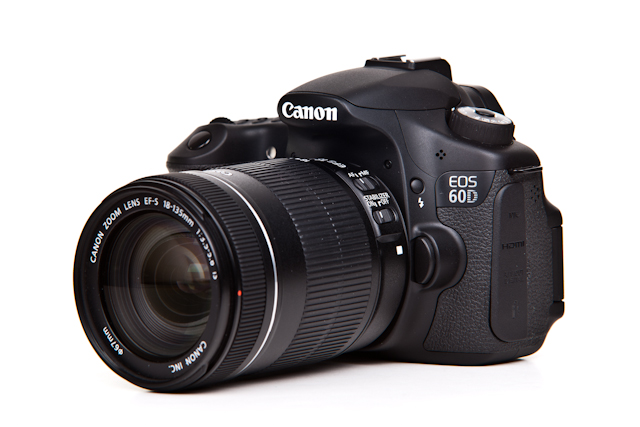



















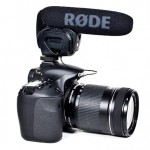
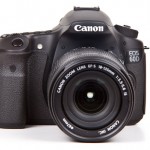
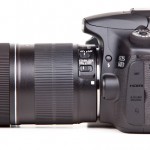
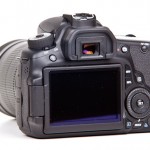
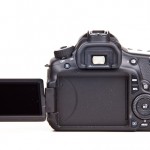
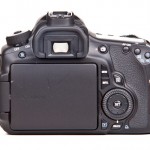
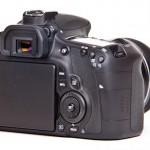
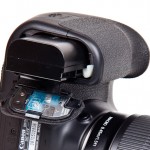
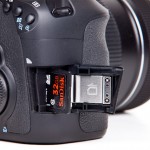
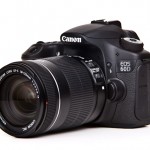


I’ve read a number of 60D reviews around the Web and by and large they say pretty much the same things as have you. For me that’s a good thing as it suggests everyone came to the same conclusions and that their experiences were similar.
However, in my reading I’ve come to a different conclusion than everyone else. I actually find the 60D more of a stop backward than a step forward for the xxD. While I really like the articulated LCD screen (and have wished for one on more than one occasion with my 40D), I find most everything else to be either status quo or a drop back.
The body, if memory serves, is now plastic as opposed to magnesium as it was in the former xxD models. And I believe I recall reading elsewhere that weather sealing was cut back as well on the 60D.
Besides the update to the 18MP sensor I don’t see where Canon added anything newer or better over the 40D or 50D. One area they could have changed would be the auto-focus points. Adding more would have been a great improvement in my mind even if they didn’t go as far as they have with the 7D.
It’s just my opinion, but I’m rather disappointed in the 60D. For the additional cost over the Rebel I don’t see it as being anything but a bit bigger (and easier to hold in my mind). I note a marked difference between my 40D and Rebel XTi, but in my fiddling with the 60D and T3i I haven’t seen enough of a difference to warrant the additional cost.
Of course I’m probably slightly tainted by my desire for the 7D anyway ;-)
Agree. In many aspects 60D is a step backward.
I am about to buy EOS 60D. Hence I appreciate this this detailed review. It will enable me to make a final decision. Thanks a lot.
Rohit
I don’t see much difference between the 60D and T3i either, except the 60D is larger. But for me at least being bigger is a very good reason to opt for the 60D over the T3i as the Rebel’s grip is uncomfortable to my large hands.
Anyways, great review!
Hi, thanks for the review. By the way, which do you suggest, 7D or 60D?
They are both the same picture quality wise………..I have the 60d
The Canon 60d…is one outstanding camera……..I have one…awesome pictures
I rather like the 60D, despite the plastic body. It feels fairly solid compared to my 40D. It has a comfortable grip. The articulated screen, video mode, and high ISO make it a worthwhile upgrade.
However, the one thing that turns me off completely is that the rubber grip peels off easily. I’ve seen the camera on display at several different stores and they ALL have peeling grips. Looks like Canon used some really cheap adhesive. Why haven’t any reviews mentioned this??
After a XTI and 50D i have passed to 60D since 5 months.
A brief acclimatation to access functions and now i’m very, very satisfied.
LCD flip screen is very accurate.
Rapid focusing system and more accurate than 50D.
SD card are more easy to carry in travel but not also strong body than CF card.
LPE-6 battery are better than BP-511 on the 50D.
I’m not angry about a plastic body because i never had problems or see my friends in photographic club to have trouble with this type of bodies since 6 years.
And i like the possibility to catch good HD video in high ISO when the situation command it .
This camera is a very good value for poeples who don’t want to pass in full frame for multiple personnal reasons….
One thing to ameliorate the 60D can be a rapid and continious autofocus on video mode.
This review would be MUCH better if you added high resolution versions of the examle pictures. It’s for example impossible to review the ISO pictures when they’re so small.
Sorry Andreas. I inserted the wrong link to the photos. I’ve corrected it now and you should be able to click on the photos and get the full size files.